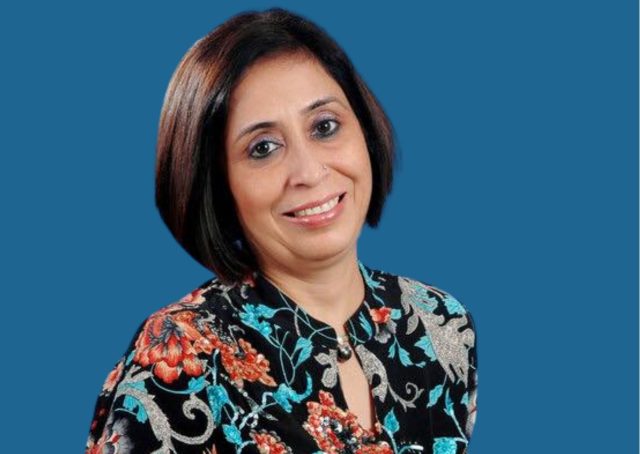Cloud kitchens are a new trend in the food industry and continue to evolve. Industry experts believe that it will attract more companies and more experiments in the future.
Charmaine Fernz
A couple of years ago, getting food delivered to the comfort of your home was considered a luxury. Fast forward to 2022, food delivery has become a way of life. In a way, we can attribute this growth to COVID which had nothing but misery and pain. Nonetheless, as the adage goes, there is always a silver lining. The silver lining during COVID was the booming growth of the food delivery industry. Explaining the trend, Chef Pawan Bisht, Corporate Chef and R&D Executive, One8 by Virat Kohli says, cloud kitchens are tried and tested in India. Results have shown that this is a successful model for the Indian market and with the increase of technology in tier II and III cities, this business model will become even more successful in the coming years.
Elaborating on the technology takeover, Raj Kamal Chopra, Corporate Chef, Fortune Park Hotels Ltd explains that people have to accept that hospitality services are evolving into new and fresh forms with rapidly changing times. Everything has been digitised since COVID therefore, the transition to a delivery-only strategy has intensified. With the digital shift of all the services, people have begun to prefer online platforms and despite the pros and cons, both online and offline platforms will run simultaneously for foreseeable future at least.
Talking passionately about a concept close to his heart, Shubham Maheshwari, MD & CEO, Being Chef says that they ventured into the concept of cloud kitchens long before. He explains saying in 2013, we launched a concept called five-minute recipes wherein anyone can cook anything within five minutes with our DIY meal kits. Post this, we ventured into multiple models such as cloud kitchen dining, subscription-based models, and many others. However, we were way ahead of our time when there was no Zomato or Swiggy.
Citing COVID as one of the boosters for the growth of cloud kitchens is a common thought in the industry. Sharing similar views, Vishaal Bharadwaj, Head, Operations, Bird Catering & Lounges, owner and operator of Eat.Co says, over the last three years the outlook toward the restaurant business has seen a rapid shift from the perspective of customers and business owners. The home delivery business which contributed a small chunk to the restaurant’s revenue now holds a considerable share.
He further adds that a substantive increase in internet penetration, a rise in technology integration in the food business and the rise of app-based online food aggregators have fueled the growth of delivery and cloud kitchens.
The balancing act
Cloud kitchens are here to stay, and this fact has been established in the last two years. However, every new trend effective will have its fair share of advantages and disadvantages. While food delivery has a bright future, are cloud kitchens a viable business model?
Chopra claims that while having a cloud kitchen can help reduce operating costs, the reporting and tracking benefit can also be beneficial in predicting higher demand and can help maintain lower selling prices due to lower overhead expenses. However, these factors do not assist in overcoming multiple other scaling-up problems, which could potentially dilute consistent customer experience. He further adds that a top-of-mind recall occurs only when you encounter the brand repeatedly. This is not possible with cloud kitchens. Furthermore, as there is no dine-in, there is a lack of experience that can be shared, drastically limiting the most reliable marketing route for local businesses—word of mouth. Maheshwari believes that it is a two-pronged approach for both consumers and business owners. He says from a consumer perspective there are much more options, lower costs in ordering food and convenience of one’s home. While the cons are a lack of brand connectivity and physical presence. You just have a presence of a food delivery app with no strong brand connection. However, for business owners, the advantages are lower overheads and operations from a single kitchen serving multiple brands resulting in a larger market share without added logistics support and supplier support. However, anyone looking to create a brand legacy cannot rely on cloud kitchens.
Sharing a clear view, Bisht explains the advantages of cost reduction for the business model, great expendable model, no overhead cost and gives a great opportunity to build multiple brands easily. However, the disadvantages are the lack of pricing power, huge competition, high dependence on food aggregators’ platforms and low-profit margins because of the cut in between for all the delivery platforms.
Bharadwaj shares a similar view on cost savings in terms of the lease and setting up facilities. Buying or high rentals axe a major chunk of revenue. Unlike restaurants, cloud kitchens do not need to be in high-end (rent) areas. Setting up a cloud kitchen is relatively quick since businesses do not have to build up a whole new place.
Comparison of concepts
For many people, the one lingering question is the difference between a cloud kitchen and a restaurant (be it standalone or fine dining). There is a stark difference. As Bharadwaj explains, establishment cost is a major differentiating factor between the two. Cloud kitchens today invest a lot in technology, infrastructure, manpower training, and delivery fleet among many others. Sharing a rather different view, Bisht says that there is no comparison between a restaurant and a cloud kitchen when it comes to business models and experiences. Though both are food and beverage models but function differently. A cloud kitchen can be operated from anywhere while a restaurant needs a good location and accessibility for guests and customers.
The Growing Potential
Cloud kitchens hold a lot of promise but provided things get streamlined. As Bisht explains, post-COVID drastic growth was witnessed
in the cloud kitchen space across India. Today, people prefer to order food online due to safety and comfort levels.
Bharadwaj elaborates further saying people are adapting to the change quite comfortably as cloud kitchens deliver quality food at a place of consumer’s choice with the click of a few buttons on an app. It saves up a lot of time and the hassle of planning an outside dinner.
Maheshwari is confident that cloud kitchens do not require huge investments. He says that one can easily open a cloud kitchen brand in less than five to `10 lakh. The requirements are simply a small space which can even be your basement.
The Future
Cloud kitchens have a promising future and are on the rise. Industry experts share a similar view, as Bharadwaj explains, minimum wastage of food, environment friendliness, sustainability, and healthy cooking will be the key trends defining cloud kitchens.
Technology is the next buzzword and if deployed across the right mediums will change the dynamics of cloud kitchens. As Chopra states technology serves as the foundation for restaurants that exclusively accept incoming orders through online ordering systems.
Bisht adds that the huge potential forecasted for this industry says a lot about potential. The F&B industry has seen a major shift in the past few years and food delivery is a major aspect of it. Today, people prefer the comfort of their homes, with quality restaurant food so why not serve it up to them?
“The outlook toward the restaurant business has seen a rapid shift”
Vishaal Bharadwaj Head, Operations, Bird Catering & Lounges.
“One8 Cloud kitchens are tried and tested in india”
Pawan Bisht Corporate Chef and R&D Executive,
“We were way ahead of our time when there was no Zomato or Swiggy”
Shubham Maheshwari MD & CEO, Being Chef










